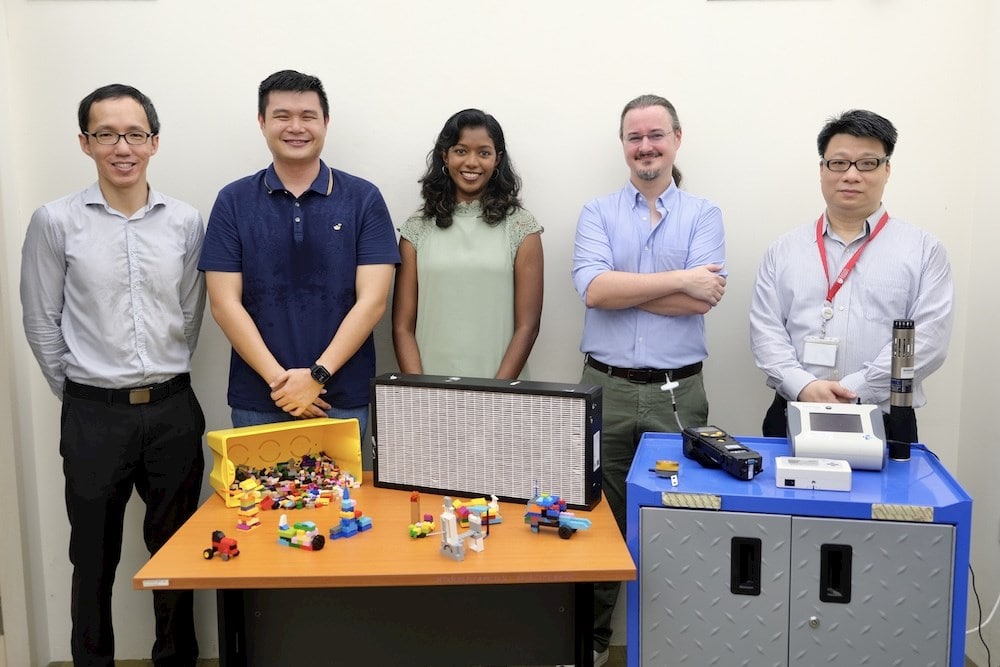您知道吗?您所呼吸的空气会影响您大脑的创造性思维。一项研究表明,环境中的挥发性有机化合物(VOC)对我们的创造性思维能力有显著影响。换句话说,我们周围的空气可能是创新思维的无声催化剂。
In the fast-paced world we live in, creativity is often viewed as the driving force behind innovation. A recent experimental study conducted by the National Technical University, Singapore (NTU Singapore), has unveiled an unexpected factor that could influence our creative abilities – indoor air quality.
The study aimed to objectively measure creative thinking by engaging participants in creative building activities using the Serious Brick Play method. The results were enlightening, as they demonstrated a noteworthy link between clean air and heightened creativity. Specifically, exposure to common indoor air pollutants had a tangible impact on creative performance. Clean air was found to facilitate imaginative thinking, while poor air quality seemed to hinder the creative process.as
找出罪魁祸首
该研究评估了室内空气质量参数(PM2.5、TVOC和CO2)在维持创造性环境(涉及横向思维能力)方面的作用。
研究人员向参与者提出了一项挑战,要求他们在规定时间内使用乐高®积木搭建一个方案。然后要求他们描述自己的创作,并从原创性、流畅性和搭建质量等几个方面,对他们的创作和描述进行评估。

图片:(左起)研究小组成员包括:南洋理工大学助理教授Ng Bing Feng、南洋理工大学毕业生Lau Wee Siang、南洋理工大学博士毕业生Shmitha Arikrishnan、前南洋理工大学高级研究员Adam Charles Robert博士和南洋理工大学副教授Wan Man Pun。
研究中使用的产品有:
• 灰尘过滤器 – 组合使用G4(康斐尔30/30面板式过滤器,ISO ePM10 50%)和F8(康斐尔EcoPleat G,ISO ePM1 70%)
通过使用具有极高表面积和相关孔隙率的优质活性炭来去除挥发性有机化合物。
• 分子过滤器 – 康斐尔 TVOC去除过滤器

1. 使用正确的过滤器
在投资商业建筑空气过滤解决方案之前,需要考虑的事项:
1. 检查您现有的空调系统
2. 开展常规检查,确保管道中无旁路或建筑结构中无泄漏
3. 确定可安装在现有AHU中的过滤器类型
4. 根据ISO 16890和ISO 10121-3标准分类,选择过滤器
5. 根据EN 13053标准,按可接受的最终阻力估算过滤器更换持续时间
6. 根据“总拥有成本”评估总体空气过滤解决方案,包括能源成本、过滤器更换持续时间、劳动力成本和CO2排放
2. 考虑安装空气净化机组
在未安装空调的地点,或者AHU空气过滤器因空间受限而无法升级时,我们建议空气过滤器的过滤级数至少达到2级。例如符合ISO 10121-3标准的分子过滤器,以及符合EN1822标准的HEPA14(MPPS)。
购买空气净化机组前应考虑以下几点:
1.清除香烟烟雾的洁净空气输送速率(CADR)(直径0.1–1.0µm)
2.臭氧排放(适用于电子技术空气过滤器),建议考虑机械过滤产品
3.噪音水平
4.节能电机(如EC电机)
5.至少2级过滤器,用于去除VOC/臭氧的分子过滤器和用于去除超细颗粒的HEPA14(@MPPS)
为日常生活注入创新活力
在我们生活的各个方面,产生创新能力都至关重要。通过此次研究,人们将开始重视洁净空气对创造力的影响,而不再将其视作可有可无。通过改善共同环境中的空气质量,可以释放潜在的、未被开发的创造力,让创新成为日常工作的常态。
为此,我们首先要找出那些能在不经意间污染室内空气品质的日常物品,并采取必要措施,有效降低其负面影响。
1 来源: 新加坡南洋理工大学能源研究所,“通过乐高Serious Brick Play方法围绕室内空气质量对创造力的影响进行的实验研究”,2023年9月19日,https://www.nature.com/articles/s41598-023-42355-z